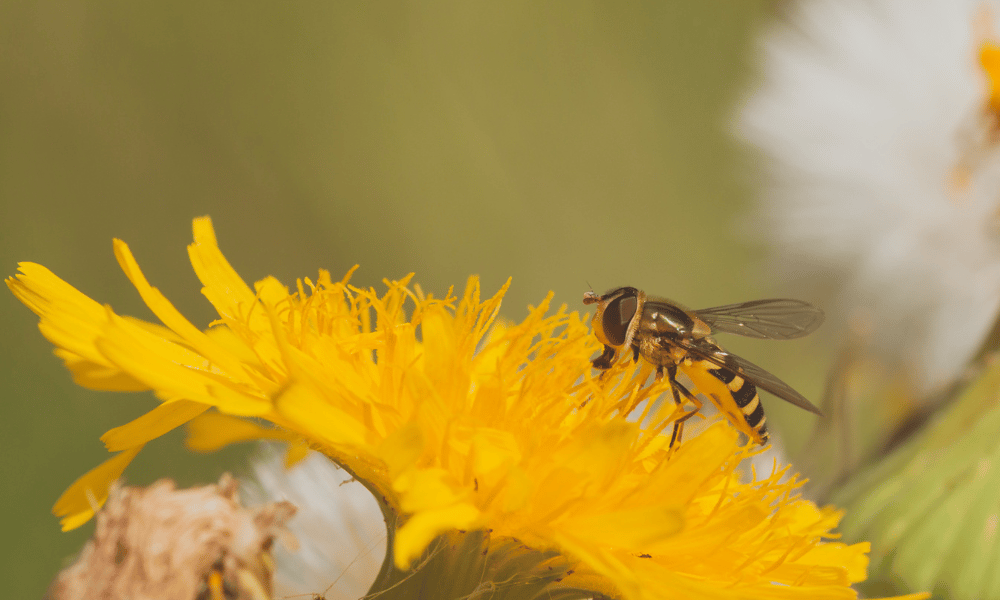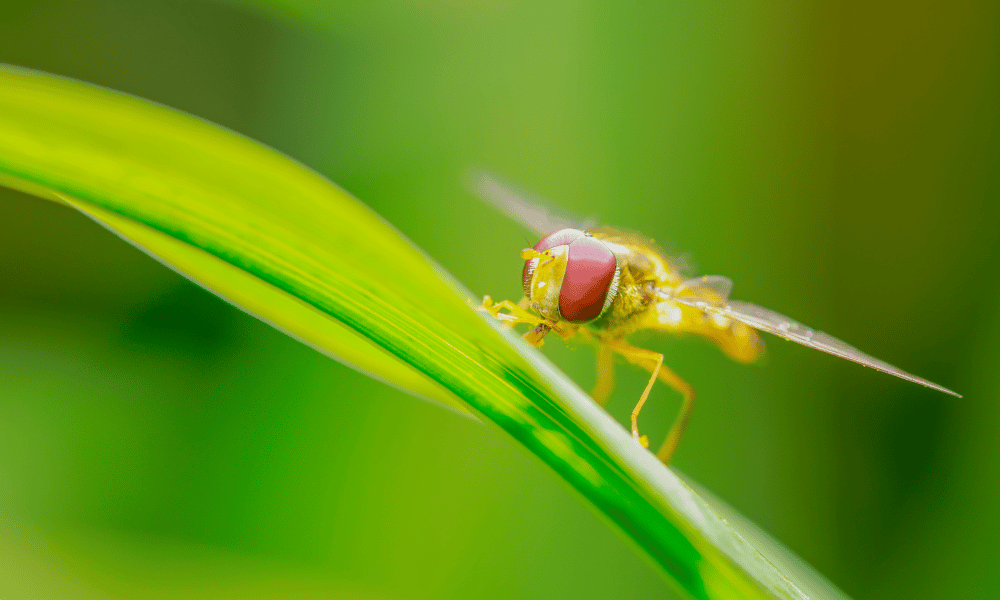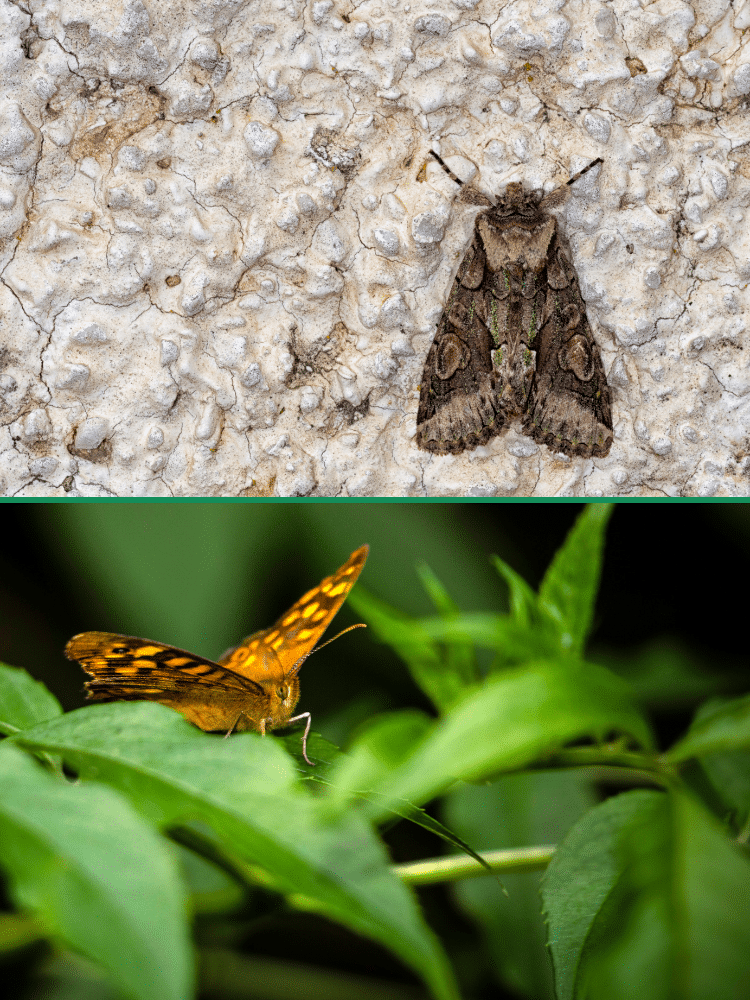Hoverflies have mastered the art of disguise. While wasps can sting and defend themselves, hoverflies do not have a stinger, leaving them defenceless. But do hoverflies also copy a wasp’s nesting habits? Do hoverflies build nests?
Yes, hoverflies take on similar nesting practices to wasps. Many hoverflies will build nests in trees or wooded areas. However, some hoverflies will sneak into wasp nests and lay eggs. The eggs hatch and go undetected by the wasp.
Where Do Hoverflies Lay Eggs?
Hoverflies lay eggs in a few different ways. The first place that hoverflies lay eggs is in their nests. They build nests in trees and within wooded areas. Hoverflies will also lay their eggs in nests and hives of other insects.
Hoverflies are the master of disguise and have even taken on the lives of those they imitate.
They will sometimes infiltrate bees’ and wasps’ nests and live amongst them for protection. Some hoverflies will even lay their eggs amongst the eggs of the other species.

Hoverflies can also lay their eggs in septic water. While it may seem like a strange place for an insect that eats pollen and nectar as an adult, septic water provides an environment full of other organisms to eat.
Where Do Hoverflies Live?
Hoverflies live in a variety of places. They tend to be found in wooded areas during periods of rest and in areas with lots of flowers and tall grasses during the day.
If you are hoping to increase the number of hoverflies in your garden space, you can do a few things to make them more likely to stay.
Allowing your grass to grow longer provides shelter and places for hoverflies to rest and live. Dandelions are also a great food source for hoverflies. These weeds are full of pollen and nectar, which are also great for bees and other pollinators.

Wild mustard, fennel, and other fragrant herbs are great for attracting hoverflies. They love the delicate scent of the flowers and the sweet nectar they produce.
Other plants that attract hoverflies are wildflowers, daisies, dahlias, and asters. Growing wildflower fields in places where tall grasses grow is a great way to provide an inviting environment for hoverflies.
To make the environment even more irresistible to hoverflies, creating a hoverfly lagoon allows these insects to drink and stay hydrated without leaving your garden space.
Many hoverfly varieties will also lay eggs in these lagoons, so if you are hoping for an abundance of aphid-eating larvae, a lagoon or two in your garden can go a long way.
To create this lagoon, find an old bowl or dish and fill it with water. Add sticks, leaves, and other natural materials the hoverflies can land on while laying their eggs. Place the lagoon in a shaded place in your garden where it is less likely to be disturbed.
Where Do Hoverflies Build Nests?
Hoverflies build nests in wooded areas or places full of wildflowers and tall grass. Allowing a small section of your lawn to overgrow and sprinkling some wildflower seeds throughout mid-spring will help create an ideal environment for these insects.
Hoverflies will also lay eggs in hoverfly lagoons which are man-made pools of water with twigs, leaves, and other organic materials that allow the hoverflies to lay their eggs in the water.
Sometimes hoverflies will sneak into the nests of other insects like bees and wasps and lay their eggs there. They will not build a nest with these insects but rather live amongst them as an imposter.
FAQs
Do you still have more questions about hoverflies and where they build nests? Then perhaps you should give these FAQs a quick read:
Hoverflies tend to build their nests in trees above ground, where they have protection from predators. They are not likely to build nests on or in the ground.,
Hoverflies are very unlikely to build their nests inside your home. Instead, they prefer to be in wooded areas where they can access food and other wildlife.
A hoverfly nest looks similar to a wasp nest. The nest will usually be in a tree or other wooded area.







